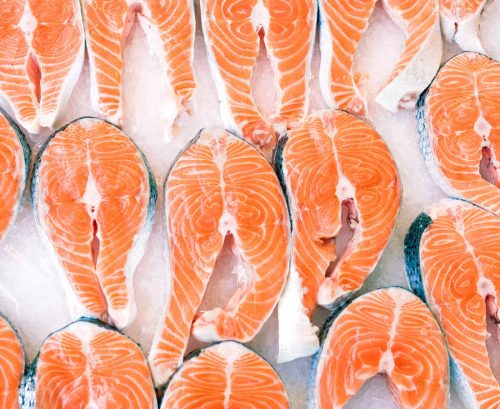
Chinese researchers claim COVID-19 potentially survives on surfaces in low-temperature environments, such as refrigerators and cold store rooms, for over a week.
A research paper that, importantly, has not yet been peer reviewed, was published on Monday, on bioRxiv.org, claiming SARS-CoV-2 attached to salmon remained viable for eight days when stored at 4°C, while the virus in a culture remained infectious for more than eight days at that temperature.
At room temperature, the virus survived on surfaces for up to two days.
Concerns for contaminated fish or meat as a source of COVID
The findings have not yet been put through the peer-review process or replicated, so are by no means conclusive, but the research is a preliminary investigation into concerns that food-packing workers have contracted the virus in several countries including the US, Vietnam, New Zealand and China.
In New Zealand, investigations into the frozen food storage site where one person with COVID-19 worked did not uncover existing contamination of food products or the environment.
COVID-19 may last longer at low temperatures
The South China Agricultural University researchers say other experiments have shown SARS-CoV-2 loses viability with increased temperature, but claim their experiments show refrigeration may extend the life of the virus.
If the researchers’ findings are eventually shown to be right, they believe this may point to a risk of international transmission of COVID-19 via importation of contaminated fish products, which can be transported to another country within one week.
The novel coronavirus, and others similar to it, can last at room temperature on different surfaces for varying lengths of time – up to 24 hours for cardboard and 2-3 days for plastic and stainless-steel surfaces.
Microbiologist Siouxsie Wiles told Healthy Food Guide it is unlikely refrigerating or freezing food products will kill SARS-CoV-2.
However, cooking your food at 60°C or more for 30 minutes or more is likely to kill the virus.
Person to person is the main way to catch COVID
Catching the virus by touching a contaminated surface then touching your mouth, eyes or nose is possible but, according to the US Centres of Disease Control and Prevention, the main way it is spread is from person to person.
For instance, between people who are in close contact with one another (within about 6 feet or 2 metres) ‘through respiratory droplets produced when an infected person coughs, sneezes, or talks’.
“These droplets can land in the mouths or noses of people who are nearby or possibly be inhaled into the lungs’, the CDC says.
Article sources and references
- Manman Dai, eat al. Long-term survival of salmon-attached SARS-CoV-2 at 4°C as a potential source of transmission in seafood markets. biorxiv.org. Accessed 10 September 2020https://www.biorxiv.org/content/10.1101/2020.09.06.284695v1.full
- Dale Fisher, et al. Seeding of outbreaks of COVID-19 by contaminated fresh and frozen food. biorxiv.org. Accessed 10 September 2020https://www.biorxiv.org/content/10.1101/2020.08.17.255166v1.full
- How COVID-19 Spreads. Coronavirus Disease 2019 (COVID-19). US Centres of Disease Control and Prevention. Accessed 10 September 2020https://www.cdc.gov/media/releases/2020/s0522-cdc-updates-covid-transmission.html
www.healthyfood.com










